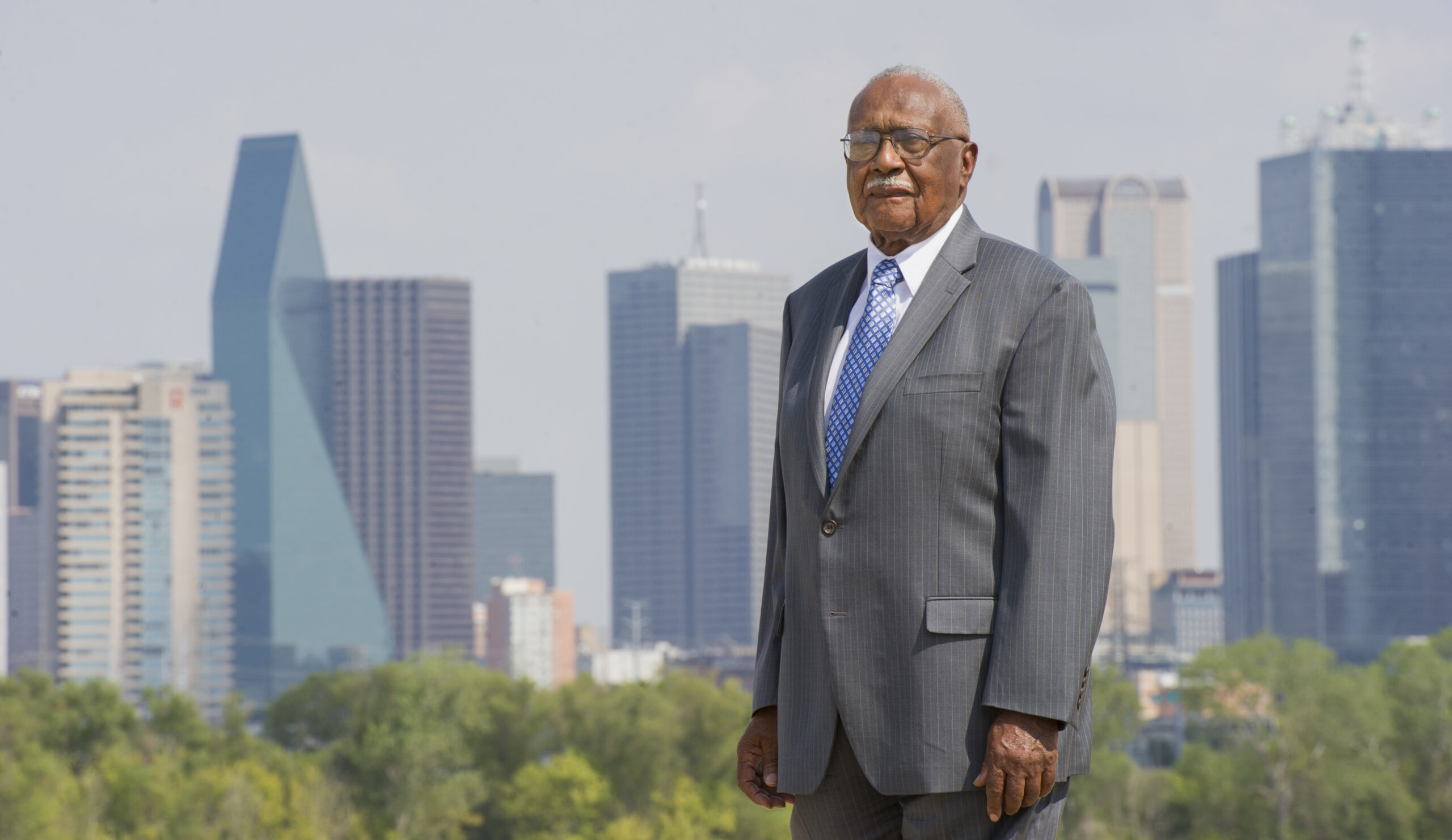Lasting legacy

Dr. Claude R. Williams Sr. never intended to pursue orthodontics.
But when his own daughter was denied treatment simply because she was Black, the incident changed the course of his career, leading him to mentor hundreds of dental students and increasing access to care for underserved populations.
Williams, an icon at Texas A&M School of Dentistry, recently passed away at the age of 93. He will be remembered as a determined advocate for students who was dedicated to advancing student diversity.
Dr. Reginald Taylor, interim associate dean for graduate and professional programs, said Williams “kicked doors open.”
“When you open a door gently, it can close behind you,” he said. “But when you kick a door off its hinges, it can’t close, and others can enter behind you. That describes Dr. Claude Williams Sr.
“He turned the hurt and pain of injustices he experienced into a passion to prevent others from experiencing the same. Dr. Williams was a mentor and a friend. His door kicks will surely be missed.”
Dedicated father and professional
Williams grew up in Marshall, Texas, and devoured educational experiences, whether that was on his grandmother’s farm, in the pews of Ebenezer United Methodist Church or at the feet of local college professors. The community instilled a commitment to learning and living a full life.
After high school graduation, Williams attended Wiley College for two years before transferring to Howard University in Washington, D.C., both historically Black institutions. By 1954, he had earned a bachelor’s degree in zoology and a doctorate in dental surgery.
The accomplished student served in the U.S. Naval Reserve, becoming the first African American dental commanding officer and the first African American Navy dentist to achieve the rank of captain. At the conclusion of his Navy career, he turned back toward Texas and established a general dentistry practice in Marshall.
It was the late 1960s, and as a Black dentist in a state with deep-seated segregation, Williams had a built-in client base and growing practice. He and his young family were settling into their community and had just moved into a ranch house built to their own design when it became apparent one of his twin daughters needed braces.

Although her orthodontic needs mirrored those of many pre-teens, Williams said, “not a white orthodontist would treat her. Nor would a dental school.” He sought treatment for his daughter across the state of Texas in Dallas, Houston and San Antonio, but the answer was always the same – “no,” due to the color of her skin.
“Could you imagine having a daughter who needed orthodontic care, and no one would treat her?” Williams said in a previous interview with Dentistry News. “I had to re-evaluate a lot of things in my life. How do you respond to the rejection? It can either elicit a negative or positive response.”
A Fort Worth orthodontist and former Navy comrade put it bluntly: “Claude, if you want your daughter to have orthodontic treatment, you are going to have to go back to school.”
This became a turning point of his life and career. Williams snagged the last remaining slot in Howard University’s newly minted, graduate orthodontic program that year and in just a few months, closed his East Texas practice and moved his family to Washington, D.C.
“I think that story is kind of the epitome of who he is,” said Dr. Nathan Fletcher, a National Dental Association past president, who asked Williams to speak at a 2010 diversity summit. “He saw the bigger picture and generated legacies for other people, primarily African American, to get into the profession and be successful.”
Game changer
Williams brought that determination and foresight to Texas A&M School of Dentistry when he joined the faculty in 1973 as an assistant clinical professor in orthodontics. He and his family moved to Dallas a few years earlier, in part to help foster a growing middle class African American community. He set up a successful orthodontic practice in South Dallas and spent hours volunteering at the Children’s Medical Center Dallas dental clinic.
When he was recruited to the Texas A&M School of Dentistry, he started by teaching one half-day every week. Although his official role was not tied to diversity initiatives or community outreach, minority students in the newly integrated school sought him out in the clinics.
He was the school’s first Black faculty member, and he shouldered the struggles of his students, including his own son, Claude Jr., who enrolled in 1978. Outside the classroom he invited them to his personal practice to observe his style of management and learn under the careful supervision of Black lab technicians.
Williams later noted that enrolling Black and minority students without properly preparing the faculty, staff and other students caused conflicts. They were accepted into the program but provided no support.
In the years that followed, Williams, with the support of school administration, formed the Office of Minority Affairs and served as its director. Although the position took him out of the orthodontic department, it allowed him to pioneer the school’s pipeline program for youth in underrepresented minority groups who were interested in dental careers, setting the stage for today’s robust Bridge to Dentistry programs.
Dr. Ernie Lacy, associate dean for the Office of Student Affairs, said Williams’ name is synonymous with advocating for and advancing student diversity.
“He was the initial champion for the school’s efforts to increase diversity among its student population,” she said. “All that has been accomplished in this area has been built on the foundation that Dr. Williams laid.”
In later years, Williams joined the school’s marketing and communications team, assisting with external affairs. He helped form many long-lasting and vital external partnerships for the school, including support of the annual Emmett J. Conrad Leadership Program.
Dr. Larry Tadlock, department head and program director for the Department of Orthodontics, said Williams’ work leaves a lasting legacy.
“His positive impact was immediately felt when he joined the department, but his greatest impact came after his appointment as director of minority affairs for the school,” he said. “His work as a mentor and leader set the foundation for the successes the school has today.”

After 40 years, Williams retired from the Texas A&M School of Dentistry in August 2013.
Despite an incredibly busy professional career, Williams made time to actively serve his community. He was a member of Hamilton Park United Methodist Church and a lifetime member of Alpha Phi Alpha Fraternity, the NAACP and the National Association of Naval Officers. He was also a member of many professional organizations, including the M.C. Cooper Dental Society, Dallas County Dental Society, National Dental Association and American Association of Orthodontists.
Honoring Dr. Williams
The Dr. Claude R. Williams Sr. Endowed Scholarship at Texas A&M School of Dentistry was established in 2001 and endowed in 2021.
To honor Williams with a donation:
- Go to txamfoundation.com.
- Click on the “Give Now” button.
- Where it says “Select a Unit or College,” select “An Unlisted Account.”
- Where it says “Giving Account Name or Number,” type – Dr. Claude R. Williams Scholarship – 23-076011.
- Follow the rest of the instructions regarding donation, contact and payment information.
You can also make a donation by check. Please make it payable to Texas A&M Foundation. In the memo, write – Dr. Williams Scholarship – 23-076011, and mail the check to Texas A&M Foundation, 401 George Bush Drive, College Station, TX 77840.